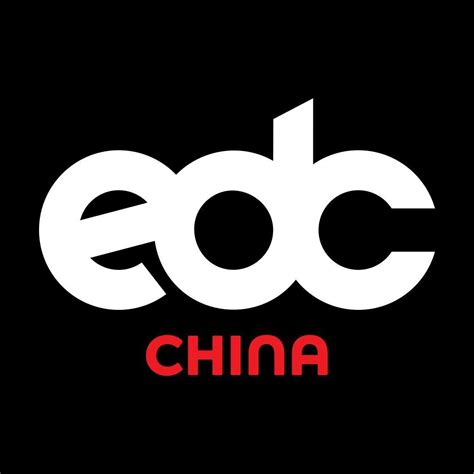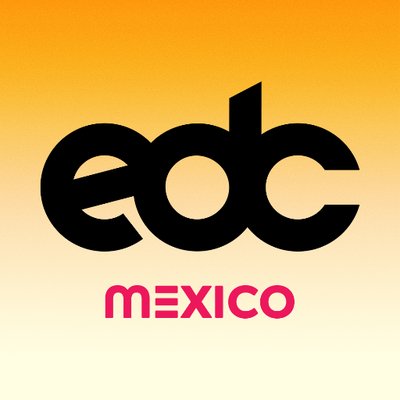Electric Daisy Carnival (EDC) is more than just a music festival; it is a global cultural phenomenon that brings together music, art, and community. Originating in the underground rave scene, EDC has grown into one of the largest electronic music festivals in the world, celebrated for its vibrant atmosphere and cutting-edge performances. With events spanning multiple continents, from Las Vegas to Tokyo, EDC has become a symbol of unity, creativity, and self-expression. This article delves into the rich history, global expansion, and diverse elements of EDC, exploring how it impacts local economies, shapes fashion trends, and continues to evolve into the future.
Delve into this topic with ritarblog.com to gain a thorough understanding.
1. History and Origins
Electric Daisy Carnival (EDC) traces its roots back to the early 1990s, emerging from the underground rave culture in Southern California. The first official EDC event was held in 1997, organized by Insomniac Events, a company founded by Pasquale Rotella. Initially, EDC was a small-scale event catering to electronic music enthusiasts, blending elements of rave culture with a focus on music, art, and community.
As electronic dance music (EDM) gained popularity in the late 2000s, EDC began to grow exponentially, attracting larger crowds and more prominent performers. The turning point came in 2011 when EDC relocated to Las Vegas, where it transformed into a multi-day mega-festival. Since then, it has expanded to various international locations, including Mexico, Japan, and the UK, solidifying its status as a global brand.
EDC’s origins remain deeply rooted in the ethos of inclusivity, self-expression, and creative freedom, with the festival maintaining a connection to its underground rave beginnings while embracing mainstream appeal.

2. Festival Locations and Expansion
Since its inception, Electric Daisy Carnival (EDC) has expanded far beyond its Southern California origins, growing into a global festival phenomenon. After relocating to Las Vegas in 2011, the event transformed into a multi-day spectacle, drawing hundreds of thousands of attendees each year. The Las Vegas Motor Speedway has become synonymous with EDC’s vibrant energy, hosting the festival’s flagship event.
Building on its success in the U.S., EDC expanded internationally, bringing the festival’s signature blend of music, art, and community to new audiences. EDC has hosted events in Mexico, Japan, the UK, Brazil, and China, each location offering its own unique cultural flavor while maintaining the core elements that define the EDC experience. These international festivals often reflect the local music scene, art, and fashion, giving attendees a diverse and immersive cultural experience.
This global expansion has helped EDC become a symbol of unity and inclusivity, attracting electronic dance music lovers from all corners of the world, and continuing to grow in size and influence year after year.

3. Music and Performances
Music and performances are at the heart of Electric Daisy Carnival (EDC), showcasing a wide variety of electronic dance music (EDM) genres, including house, techno, trance, dubstep, and drum and bass. Over the years, EDC has attracted some of the biggest names in the EDM world, such as Tiësto, Armin van Buuren, Deadmau5, and Calvin Harris, ensuring that the lineup is a major draw for festival-goers. The event is known for its carefully curated stages, each offering a unique sound and atmosphere, from the massive, neon-lit kineticFIELD to the underground vibes of neonGARDEN.
The performances at EDC are not limited to just music. The festival incorporates a range of theatrical elements, including stunning pyrotechnics, laser shows, fireworks, and immersive visual effects that turn each performance into a multi-sensory experience. Acrobats, dancers, and performers in vibrant costumes roam the festival grounds, adding an extra layer of spectacle and interaction for attendees.
This fusion of cutting-edge music and immersive performances creates an electric atmosphere, making EDC not just a concert but a full-scale celebration of art, culture, and creativity.

4. Art and Installations
Art and installations are a key component of the Electric Daisy Carnival (EDC) experience, transforming the festival grounds into a vibrant, interactive wonderland. From towering sculptures to immersive light displays, the artistic elements of EDC are designed to engage and inspire attendees. These large-scale installations are often themed around fantasy, nature, and futuristic concepts, contributing to the festival’s magical atmosphere.
One of the festival’s most iconic features is its larger-than-life stages, which themselves are works of art. Each stage is intricately designed, featuring elaborate architecture, LED displays, and interactive elements that create a surreal environment for the music performances.
Roaming art installations, including costumed performers, moving sculptures, and neon-lit vehicles, further enhance the festival’s visual appeal. These installations provide attendees with opportunities for exploration and interaction, adding depth to the overall EDC experience.
The emphasis on creativity and visual expression is one of the defining characteristics of EDC, turning the festival into a living, breathing art gallery that complements its music and performances.
5. Fashion and Festival Wear
Fashion and festival wear play a significant role in the Electric Daisy Carnival (EDC) experience, with attendees using clothing as a form of self-expression and creativity. EDC has become known for its bold, colorful, and often extravagant fashion choices, with festival-goers embracing vibrant outfits that reflect the carefree and imaginative spirit of the event.
Typical EDC attire includes a mix of neon colors, glitter, sequins, and LED accessories, creating a visual spectacle that matches the energy of the festival. Many attendees also incorporate elements of rave culture, such as kandi bracelets, face paint, and whimsical headpieces like flower crowns, animal ears, or holographic visors.
Comfort is also a priority, with many choosing breathable, lightweight materials to withstand the long days and nights of dancing. Despite its emphasis on individuality, EDC fashion fosters a sense of community, as attendees bond over shared styles and the creative freedom to wear whatever makes them feel most expressive.
EDC’s fashion culture has influenced trends beyond the festival scene, showcasing the creativity and inclusivity of its global community.
6. Impact on Local Economies and Tourism
Electric Daisy Carnival (EDC) has a significant impact on local economies and tourism, particularly in the cities that host its largest events. The Las Vegas edition of EDC, in particular, generates millions of dollars in revenue each year, drawing hundreds of thousands of attendees from around the world. Hotels, restaurants, transportation services, and local attractions all see a major boost during the festival weekend, as the influx of festival-goers creates demand for accommodations and services.
The festival not only benefits hospitality and entertainment industries but also stimulates local job creation. Temporary employment opportunities arise in areas such as event staffing, security, and logistics, providing an economic boost to local communities. Vendors, artists, and performers are also able to showcase their talents, benefiting from the large crowds EDC attracts.
Tourism extends beyond the festival itself, as many attendees take the opportunity to explore the host city before and after the event. In cities like Las Vegas, this leads to increased spending at casinos, shows, and other tourist attractions, further driving economic activity.
Overall, EDC’s presence in any city brings a considerable economic boost, making it an essential event for both the local economy and the global electronic music tourism industry.
7. Future of Electric Daisy Carnival
The future of Electric Daisy Carnival (EDC) looks promising as the festival continues to evolve and expand. With its roots deeply embedded in electronic dance music and creative expression, EDC is poised to innovate further in both its format and global reach. The festival’s commitment to immersive experiences and cutting-edge technology suggests that future events will incorporate even more advanced visual effects, interactive art installations, and groundbreaking stage designs.
As EDC continues to grow, it is likely to explore new international markets, bringing its unique blend of music, art, and community to new audiences around the world. This expansion may also involve collaborations with local artists and cultural influencers, creating a more regionally tailored experience while maintaining the festival’s core identity.
Sustainability and inclusivity are expected to play increasingly important roles in the festival’s future. EDC is likely to implement more eco-friendly practices and focus on creating a welcoming environment for all attendees.
Overall, EDC’s dedication to innovation, global outreach, and positive community impact suggests that it will remain a leading force in the world of music festivals for years to come.
Electric Daisy Carnival (EDC) has evolved from its humble underground beginnings into a global cultural phenomenon, captivating audiences with its vibrant music, immersive art, and extravagant fashion. Its expansion across continents and significant impact on local economies highlight its importance in the festival landscape. As EDC continues to innovate and grow, embracing new technologies and sustainable practices, it promises to remain at the forefront of the electronic dance music scene. The festival’s dedication to creativity and inclusivity ensures that it will continue to enchant and unite people worldwide for years to come.
ritarblog.com

